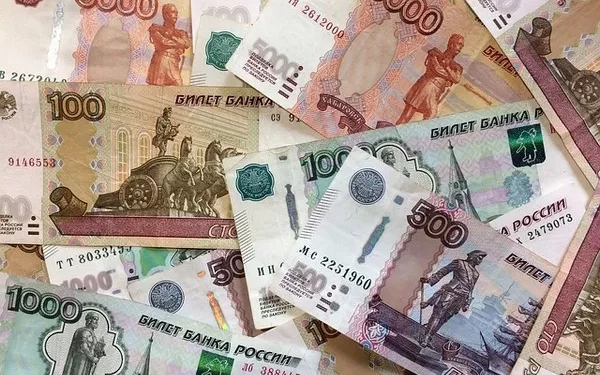The Russian ruble, the official currency of the Russian Federation, has a rich history and a distinctive symbol that reflects the nation’s economic, cultural, and historical identity. In this article, we will delve into the depths of the symbol for the Russian ruble, exploring its origins, design, and the broader context of its significance in the global financial landscape.
I. Historical Evolution of the Russian Ruble
A. Early Currency Systems in Russia
To comprehend the symbol for the Russian ruble, it is imperative to trace the roots of the currency itself. Russia’s monetary history dates back centuries, with various forms of currency being utilized in different eras. From the kopek to the silver altyn, the Russian monetary landscape witnessed numerous transformations.
B. Introduction of the Ruble Symbol
The Russian ruble underwent a major transition in the 16th century when Tsar Peter the Great introduced a modernized currency system. The first incarnation of the ruble symbol made its appearance during this period, although it was not widely adopted or standardized.
II. The Contemporary Ruble Symbol: Design and Features
A. Official Adoption and Standardization
The modern symbol for the Russian ruble was officially adopted on December 11, 2013, by the Central Bank of Russia. This marked a significant step in the currency’s evolution, providing a standardized and universally recognized representation.
B. Design Elements
The ruble symbol is a distinctive and intricate design, incorporating elements that reflect Russia’s cultural and historical heritage. Analyzing the design reveals layers of symbolism that go beyond mere aesthetics, encapsulating the essence of the nation.
C. International Recognition
While the ruble symbol is widely recognized within Russia, its international recognition and usage have been subject to various factors, including economic considerations, geopolitical influences, and global financial dynamics. Understanding the symbol’s standing on the global stage is crucial for appreciating its broader significance.
III. Symbolic Significance: Beyond Monetary Value
A. Cultural Reflections in the Symbol
The ruble symbol is not merely a representation of currency; it serves as a cultural emblem embodying the spirit of the Russian people. Analyzing the various elements of the symbol unveils layers of cultural significance, from historical references to artistic expressions.
See Also:Dynamics of Russia Ruble Stock: A Comprehensive Analysis
B. National Pride and Identity
As a symbol deeply ingrained in the nation’s psyche, the ruble symbol fosters a sense of national pride and identity. Its presence on banknotes, coins, and financial documents contributes to the overall narrative of Russia’s economic and cultural legacy.
C. Impact on Socioeconomic Perspectives
The symbolism behind the ruble extends beyond the financial realm, influencing socioeconomic perspectives within and outside Russia. Examining how the symbol shapes public perception and impacts economic policies provides insights into its multifaceted role.
IV. Challenges and Controversies Surrounding the Ruble Symbol
A. Geopolitical Influences
The ruble symbol has not been immune to geopolitical tensions and influences. Fluctuations in Russia’s global standing have, at times, affected the perception and usage of the ruble symbol, raising questions about its stability and reliability.
B. Economic Factors
The value of the ruble, represented by its symbol, is intricately linked to economic factors such as inflation, trade balances, and government policies. Analyzing the challenges posed by economic fluctuations offers a comprehensive view of the ruble symbol’s resilience in the face of financial uncertainties.
V. Future Prospects and Adaptations
A. Technological Advances and Digital Currencies
With the rise of digital currencies and technological innovations in the financial sector, the future of traditional currency symbols, including the ruble, comes into question. Exploring potential adaptations and the role of the ruble symbol in a digital landscape sheds light on the evolving nature of currency representations.
B. Globalization and Currency Symbols
As the world becomes more interconnected, the importance of currency symbols in facilitating international trade and finance grows. Analyzing the role of the ruble symbol in the context of globalization provides insights into its potential trajectory and impact on the global financial stage.
VI. Conclusion: A Symbolic Tapestry of Russian Economic History
In conclusion, the symbol for the Russian ruble is not merely a graphical representation of currency; it is a tapestry woven with threads of history, culture, and national identity. Its evolution from historical currencies to the contemporary symbol reflects the resilience and adaptability of the Russian economic landscape.
Understanding the ruble symbol requires a nuanced exploration of its design elements, cultural implications, and the challenges it faces in a rapidly changing global financial environment. As Russia continues to play a prominent role in the international arena, the ruble symbol stands as a tangible expression of the nation’s economic strength and cultural richness.
In the face of geopolitical uncertainties, economic challenges, and technological advancements, the ruble symbol remains a steadfast marker of Russia’s economic history. Its journey from the early currency systems to the digital age is a testament to the enduring significance of symbols in shaping the narrative of a nation’s economic identity.
Related Topics:
What is the Significance of 10 Russian Ruble?
Intricacies of the 1 Ruble Russia: A Symbol of Economic Resilience
A Comprehensive Guide on How to Safely Buy Russian Rubles Online




























